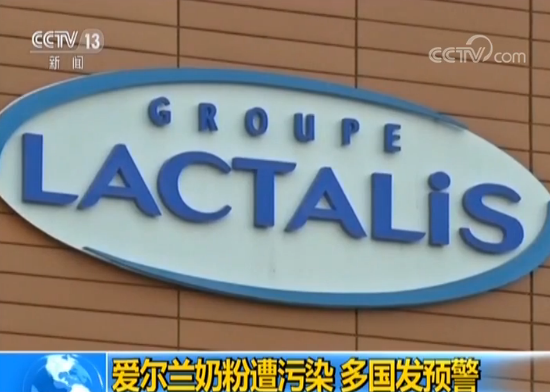Part Seven: THE SIX FU-ORGANS AND THE EXTRAORDINARY FU-ORGANS
|
文章导读: |
TCM refers the gallbladder, the stomach, the large intestine, the small intestine, the urinary bladder and the triple energizer to the six fu-organs. it is not only that, besides the functions of their own, they are characterized by their common role ofdecomposing and digesting water and food, and discharging the wastes, but that, in the process of digesting and absorbing food and excreting the wastes, they are closely related to each other both physiologically and pathologically. Their functional feather is excretion without storage and taking descending and unobstruction as their normal functional state. TCM's rational knowledge of the interrelationship of the six fu-organs is well grounded on ancient anatomical knowledge, the observation of the physiological and pathological changes of the six fu-organs and the summarization of long-term and rich medical experience.
中医的六腑指的是胆、胃、大肠、小肠、膀胱和三焦。这不仅是因为除了其自身功能之外,它们具有腐熟、消化水谷和传化糟粕的共同功能特点,而且是因为在食物的消化、吸收及排除残渣的过程中,它们在生理和病理上是密切相关的。它们的特点是泄而不藏,以通降为合。中医对六腑关系的理性认识来自于对六腑生理和病理改变的认识和长期丰富的临床经验。
Food entering the stomach is decomposed into chyme which after digested by the stomach, is transported to the small intestine in which it is further digested by means of bile excreted by the gallbladder. The small intestine "separates the clear from turbid".The clear, refers to food essence, is transported and distributed to all parts of the body by the spleen; while the turbid is the residues of water and food. Of them waste water goes into the kidney, and then into the urinary bladder where it is turned into uruie to be excreted from the body. And the other is conveyed to the large intestine where it is changed into feces and leaves the body via the anus. In the whole process of the transportation and transformation of water and food, the triple energizer dominates qi transformation and qi movement of the whole body.
食物进入胃内经胃的消化变为食糜后转运至小肠,在小肠内由胆汁进一步消化。小肠有分清别浊的功能。清指的是食物精华,它有脾运送分散到人体的各个部分。而浊指的是水谷残渣。浊水经过膀胱转化成尿液排出体外。另外的部分则运送到大肠,在大肠内转化成粪便由肛门排出体外。在水谷运化的整个过程中,三焦调节气的运化和整个人体的气的运动。
The triple energizer is one ot the six fu-organs, and among all the zang-fu organs, it is the largest fu-organ in the human body. Huangdi's Classic on Medicine holds: "The triple energizer is separated from the zang-fu organs and yet is within the body. It encloses all organs and is the largest one." And the book also advanced a viewpoint that "The triple energizer exists in name only but is not the entity". Triple energizer has no exterior-interior relationships with the zang-organs, it is therefore called "solitary fu-organ". Its main functions are to pass various kinds of qi and to serve as the pathway for body fluid. It is divided into three parts: the upper energizer, middle energizer and lower energizer. The triple energizer with the related zang-fu organs, each having its own function to perform, accomplish jointly a complicated physiological process in the digestion, absorption, distribution and excretion.
三焦是六腑之一,在所有的脏腑器官中,它是人体中最大的腑。《黄帝内经》认为:“三焦与脏腑分离但位于体内。它围绕所有的器官,是人体最大的器官”。该书亦提出一个观点即“三焦有名无实”。三焦和脏之间没有表里关系,因此也称为“孤腑”。它的主要功能是运行各种气体并是体液运行的通道。它分为三个部分:上焦、中焦、下焦。三焦与相关脏腑,各自执行其功能共同完成消化、吸收、分散、排泄这个复杂的生理过程。
The upper energizer refers usually to the part above the diaphragm, including the heart, lungs and head as well. Its main physiological function is to distribute essence-qi throughout the body. In other words, in combination with the heart and the lung, the upper energizer distributes essence-qi to the whole body to warm and nourish the skin and muscles, tendons and bones. This function is described in Miraculous Pivot "The upper energizer resembles a sprayer." This is a metaphor, which is used to describe the function of the upper energizer to sprinkle fog-like cereal essence.
上焦通常指的是膈以上的部分包括心、肺和头。它的主要生理功能是散精至身体的各个部分。换言之,通过心肺结合,上焦散精至全体以温养肌肤筋骨。这个功能在《灵枢》中被喻为“上焦如雾",这是一种隐喻法,通常用于描述上焦散精的功能。
The middle energizer refers mainly to the abdorminal part between the diaphragm and umbilicus, and includes such zang-fu organs as the spleen, stomach, liver and gallbladder. Its main physiological functions are to decompose food and transform nutrient substances into qi and blood, and to discharge the wastes and steam body fluid. This function is mentioned in Miraculous Pivot: "The middle energizer is likened to a fermentation tun." By "fermentation tun" is meant the place where food is decomposed and digested.
中焦主要指的是位于膈和脐之间的腹部部分,包括脾、胃、肝、胆。它的主要生理功能是腐熟水谷将精微物质转化胃气血,泌糟粕、蒸津液。这个功能在《灵枢》中被喻为“中焦如沤”。“沤”指的是食物腐熟消化的地方。
The lower energizer refers, generally, to the portion located below the stomach, including the small intestine, large intestine, kidneys, urinary bladder. etc. Its main function is to discharge food residuces and urine. So there is also a saying in Miraculous Pivot, "The lower energizer works like a sewer." Here "sewer" is used to describe the function to excrete the wastes. However, with the development of visceral manifestations (zang xiang), essence and blood of the liver and kidney as well as primordial qi are generally attributed to the lower energizer by later generations.
总的来说,下焦指的是位于胃以下的部分包括小肠、大肠、肾、膀胱等。它的主要生理功能是排泄糟粕和尿液。所以《灵枢》将其喻为“下焦如渎”。“渎”是用于描述排泄废物的功能。然而,随之脏象学说的发展,后人多认为肝肾之精血和元气也来自下焦。
|
|























